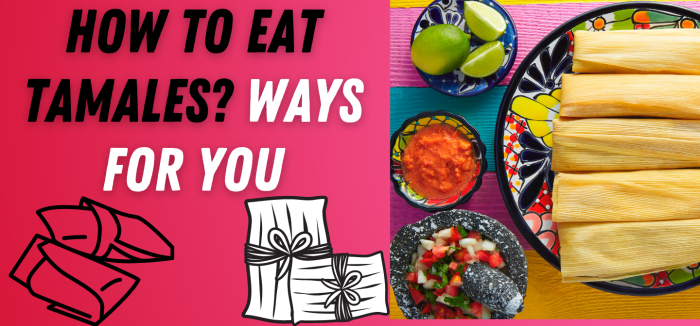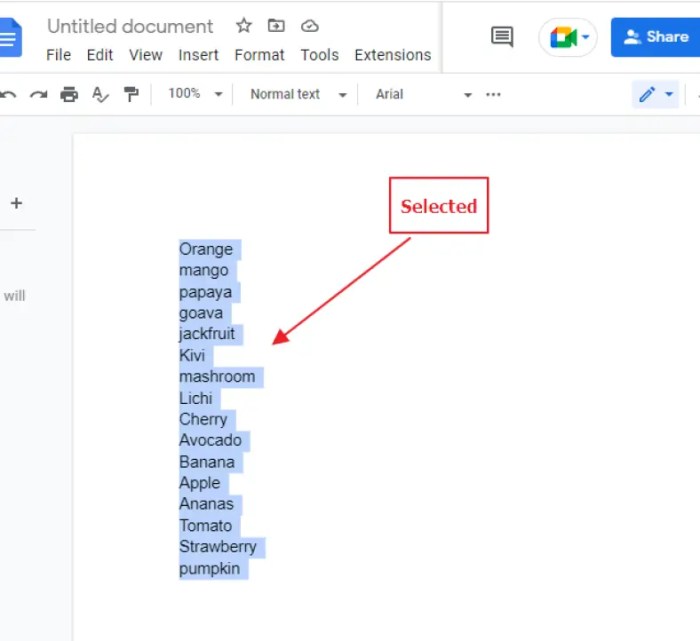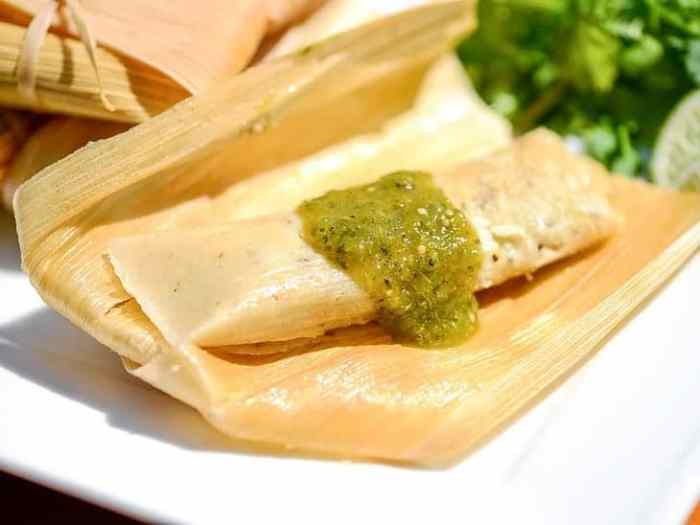
Tamales, a beloved delicacy in many cultures, offer a tantalizing fusion of flavors and textures. Their versatility extends beyond their fillings, encompassing various ways to enjoy this culinary treasure. Whether you prefer the traditional approach or seek innovative presentations, this guide will unveil the secrets of eating tamales, ensuring an unforgettable gastronomic experience.
Unveiling the nuances of tamale etiquette, this guide delves into the art of unwrapping, handling, and savoring these delectable treats. From mastering the proper techniques to exploring cultural customs surrounding tamales, this comprehensive exploration empowers you to fully appreciate the richness of this culinary tradition.
Unwrapping and Preparation
Tamales are traditionally wrapped in corn husks or banana leaves to preserve moisture and flavor during cooking. Unwrapping them is a crucial step to enjoy their delicious contents.
To unwrap a tamale, gently peel back the husk or leaf, starting from the wider end. Be careful not to tear the tamale itself. Once the husk is removed, the tamale is ready to be eaten or further prepared.
Steaming Tamales
Steaming tamales is a common practice to reheat or soften them if they have been refrigerated or frozen. Steaming helps retain the moisture and tenderness of the tamale, preventing it from drying out.
To steam a tamale, place it in a steamer basket over boiling water. Cover the steamer and steam for 10-15 minutes, or until the tamale is heated through.
Handling Hot Tamales
Tamales can be very hot when they are freshly cooked or steamed. It is important to handle them with care to avoid burns.
Use tongs or a fork to transfer tamales from the steamer or microwave. Let them cool for a few minutes before handling them with your bare hands.
Eating Techniques
Once your tamale is unwrapped and prepared, it’s time to indulge in its deliciousness. Tamales can be enjoyed in various ways, each offering a unique culinary experience.
The most common method of eating tamales is by hand. Simply hold the tamale by the husk and take a bite, savoring the flavorful filling and the soft, chewy texture of the masa.
Using Utensils
For those who prefer a more refined dining experience, tamales can also be eaten using utensils. A fork or knife can be used to cut the tamale into smaller pieces, making it easier to eat. Some people also enjoy spreading salsa or other condiments on the tamale before taking a bite.
Cultural Significance
Eating tamales together is a significant cultural tradition in many Hispanic communities. Tamales are often served at special occasions such as holidays, family gatherings, and celebrations. The act of sharing tamales symbolizes unity, community, and the passing down of traditions from one generation to the next.
Flavor Variations
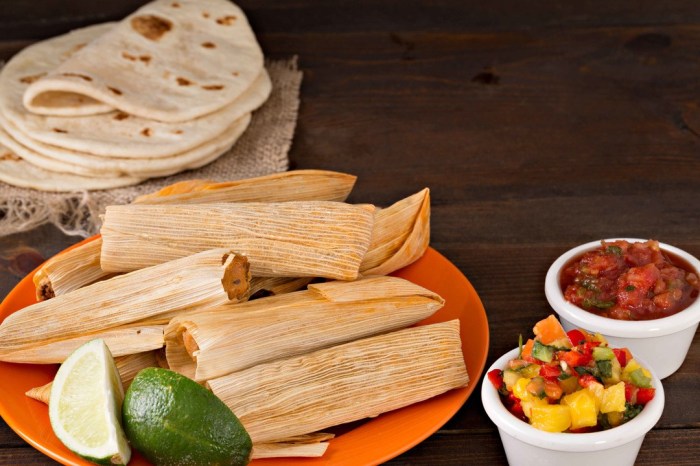
Tamales offer a diverse culinary landscape with a vast array of fillings, each boasting its unique flavor profile. From classic savory combinations to sweet and indulgent options, the variations cater to a wide range of taste preferences.
The choice of filling plays a pivotal role in shaping the overall taste experience. Meats like pork, chicken, and beef provide a hearty base, while vegetables such as corn, beans, and peppers add a vibrant and refreshing touch. Cheese, both fresh and aged, contributes richness and a satisfying creaminess.
Regional Variations
| Filling | Origin |
|---|---|
| Pork | Central Mexico |
| Chicken | Yucatan Peninsula |
| Beef | Northern Mexico |
| Corn | Oaxaca |
| Beans | Puebla |
| Peppers | Veracruz |
| Cheese | Chihuahua |
Sauces and toppings play an essential role in enhancing the flavors of tamales. Spicy salsas, such as roja and verde, add a vibrant heat that complements the savory fillings. Mole, a complex and flavorful sauce, provides a rich and aromatic touch.
Guacamole and sour cream offer a cooling contrast, balancing the heat and richness of the tamales.
Nutritional Value
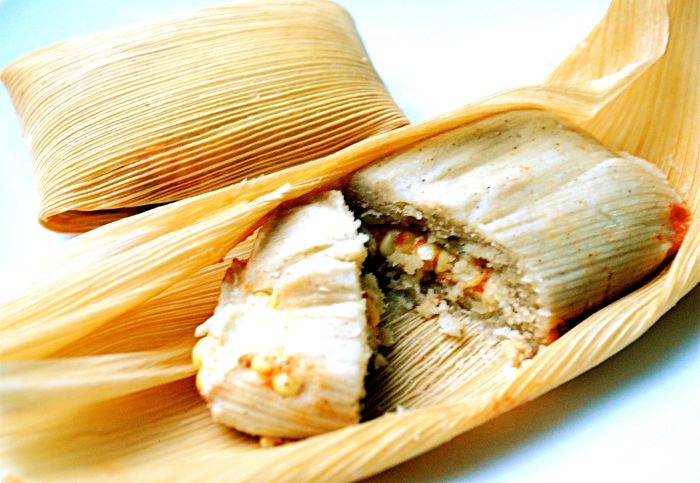
Tamales are a nutritious and delicious food that can be enjoyed as part of a healthy diet. They are a good source of protein, fiber, and vitamins, and they can be made with a variety of healthy ingredients.The nutritional value of tamales varies depending on the type of tamale.
Meat tamales are a good source of protein, while vegetarian tamales are a good source of fiber. Sweet tamales are a good source of carbohydrates.Here is a table that compares the nutritional value of different types of tamales:| Type of Tamale | Calories | Protein (g) | Fiber (g) | Carbohydrates (g) ||—|—|—|—|—|| Meat Tamale | 250 | 15 | 5 | 30 || Vegetarian Tamale | 200 | 10 | 10 | 25 || Sweet Tamale | 150 | 5 | 5 | 20 |
Tips for Making Tamales Healthier
There are a few simple tips you can follow to make tamales healthier:* Use lean meats or vegetarian fillings.
- Add vegetables to the filling.
- Use whole-wheat or corn masa instead of white masa.
- Steam tamales instead of frying them.
- Limit the amount of salt and fat you add to the filling.
By following these tips, you can enjoy tamales as part of a healthy diet.
Cultural Significance
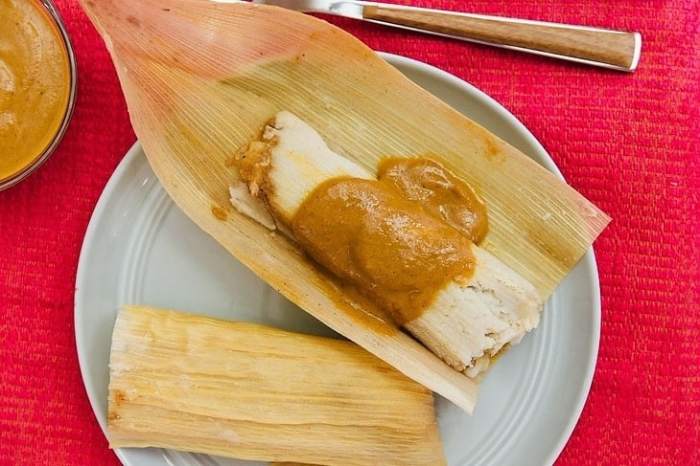
Tamales have a rich history and cultural significance in various cultures worldwide. Their origins can be traced back to ancient Mesoamerican civilizations, where they were a staple food for indigenous communities.
Tamales continue to hold a special place in traditional festivals and celebrations across cultures. They are often associated with religious holidays, such as Christmas, Easter, and Day of the Dead, and are used as offerings to deities or ancestors.
Symbolism and Beliefs
In many cultures, tamales carry symbolic meanings. In some Native American traditions, they represent the cycle of life and fertility. In Mexico, tamales are believed to bring good luck and prosperity, and are often shared as gifts during special occasions.
Preparation Methods
Tamale making is a time-honored tradition that involves several intricate steps. From preparing the dough to cooking and assembling the tamales, each step requires careful attention to detail. Here’s a step-by-step guide to making tamales from scratch:
Tamale Dough
The dough is the foundation of any tamale. Traditionally, masa harina, a finely ground corn flour, is used to make the dough. Masa harina is mixed with water and lard or shortening to create a pliable dough that can be easily spread and filled.
Fillings
Tamales can be filled with a variety of ingredients, including meats, cheeses, beans, and vegetables. The most common fillings include shredded chicken, beef, or pork; refried beans; and cheese. Some tamales also include fruits, such as pineapple or raisins.
Wrapping and Assembly
Once the dough and filling are prepared, it’s time to assemble the tamales. A corn husk is placed on a flat surface, and a layer of dough is spread onto the husk. The filling is then placed in the center of the dough, and the husk is folded over and tied with a string or strip of corn husk.
Cooking
Tamales are traditionally cooked by steaming. The tamales are placed in a steamer basket lined with corn husks, and the steamer is filled with water. The tamales are steamed for several hours, or until the dough is cooked through and the filling is heated through.
Traditional Tools and Equipment
Tamale making requires the use of several traditional tools and equipment. These include:
- A metate and mano: A metate is a flat stone used for grinding corn into masa harina. A mano is a cylindrical stone used to grind the corn on the metate.
- A tamale steamer: A tamale steamer is a large pot with a steamer basket insert. The steamer basket is used to hold the tamales while they are being steamed.
- Corn husks: Corn husks are the outer leaves of corncobs. They are used to wrap the tamales and protect them from the heat of the steamer.
Cooking Techniques
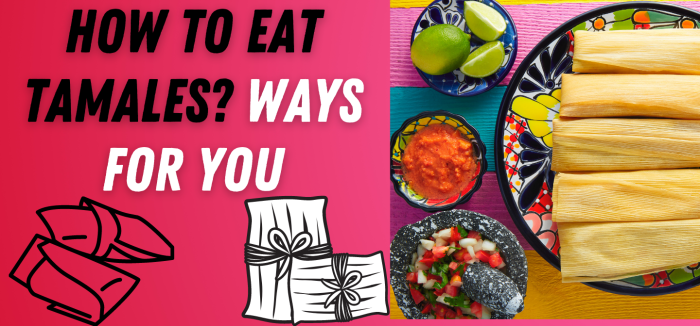
Tamales can be cooked using various methods, each with its own advantages and disadvantages. The most common methods include steaming, boiling, and frying.
To cook tamales by steaming, place them in a steamer basket lined with corn husks or parchment paper. Steam the tamales over boiling water for 45-60 minutes, or until the masa is cooked through and the filling is heated through.
To cook tamales by boiling, place them in a large pot of boiling water. Reduce heat to low and simmer the tamales for 1-2 hours, or until the masa is cooked through and the filling is heated through.
To cook tamales by frying, heat a large skillet or griddle over medium heat. Add the tamales and cook for 5-7 minutes per side, or until the masa is golden brown and the filling is heated through.
The cooking time and temperature of tamales will vary depending on the size of the tamales, the thickness of the masa, and the type of filling. It is important to cook the tamales until the masa is cooked through and the filling is heated through, but avoid overcooking them, as this can make the masa tough and the filling dry.
Storage and Reheating
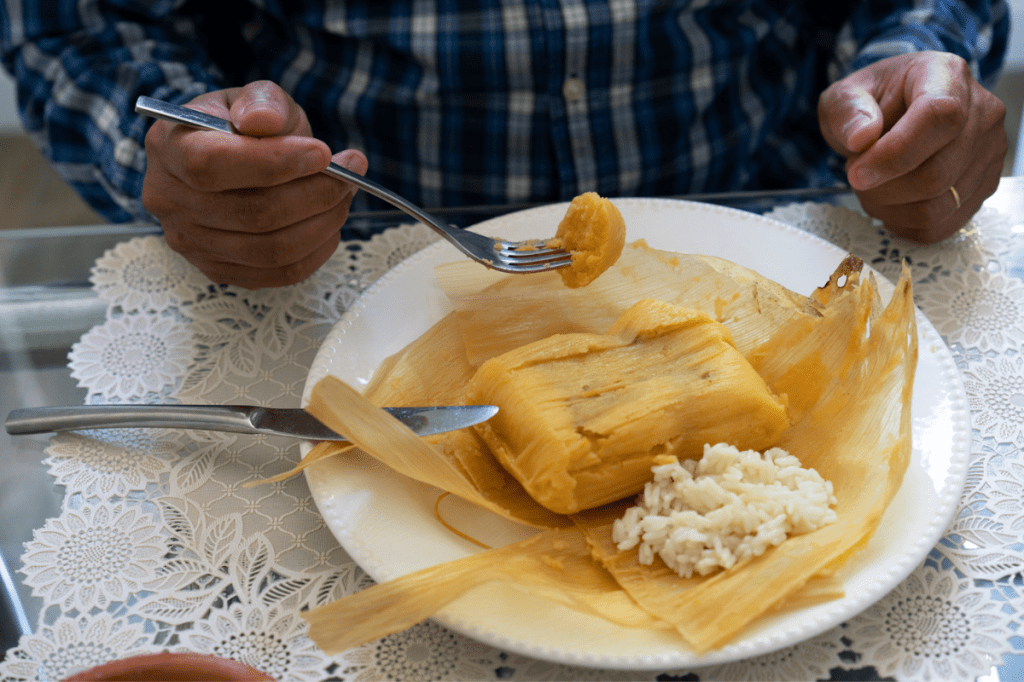
Proper storage and reheating techniques are crucial to maintain the freshness and flavor of tamales. Understanding these methods ensures that you can enjoy your tamales at their best.
Storage
- Refrigeration: Store tamales in an airtight container or wrap them tightly in plastic wrap. They will stay fresh in the refrigerator for up to 5 days.
- Freezing: For longer storage, freeze tamales in an airtight container or freezer bag. They will keep for up to 3 months.
Reheating
There are several methods to reheat tamales without compromising their flavor:
- Steaming: Place tamales in a steamer basket over boiling water. Steam for 15-20 minutes, or until heated through.
- Microwaving: Wrap tamales in a damp paper towel and microwave on high for 1-2 minutes per tamale, or until heated through.
- Oven: Preheat oven to 350°F (175°C). Wrap tamales in aluminum foil and bake for 20-25 minutes, or until heated through.
Regional Variations
Tamales, a versatile dish, showcase regional diversity, reflecting the cultural influences of various regions. From the savory flavors of Mexico to the sweet variations of South America, each region boasts unique characteristics that add to the richness of this beloved dish.
Central America
- Characterized by masa made from corn flour, giving it a slightly grainy texture.
- Often filled with savory ingredients like chicken, pork, or vegetables.
- Wrapped in banana or corn leaves, adding a subtle earthy flavor.
- Examples: Guatemalan tamales with achiote paste, Nicaraguan nacatales with a sweet filling.
South America
- Masa typically made from cornmeal, resulting in a smoother texture.
- Filled with both savory and sweet ingredients, such as meats, cheeses, or fruits.
- Wrapped in corn husks, imparting a subtle sweetness.
- Examples: Peruvian tamales with ají pepper paste, Bolivian salteñas with olives and raisins.
Mexico
- Masa can vary depending on the region, using corn flour, cornmeal, or a combination.
- Wide range of fillings, including meats, cheeses, vegetables, and fruits.
- Wrapped in corn husks or banana leaves, depending on the region.
- Examples: Oaxacan tamales with mole sauce, Yucatecan tamales with achiote paste.
These regional variations showcase the cultural influences that have shaped the evolution of tamales, creating a diverse tapestry of flavors and traditions.
Creative Presentations

Beyond traditional serving methods, tamales offer a canvas for culinary creativity. They can be transformed into visually stunning presentations that elevate any occasion.
One innovative approach is to arrange tamales vertically in a pyramid shape. This creates a dramatic centerpiece that showcases their vibrant colors and intricate designs. Garnish with fresh herbs, shredded cheese, or roasted peppers for an eye-catching effect.
As an Ingredient
Tamales’ versatility extends beyond their traditional role as a standalone dish. They can be incorporated as an ingredient in various culinary creations, adding their unique flavors and textures to other dishes.
- Tamale Pie: A hearty casserole made by layering tamales with ground beef, beans, and cheese, topped with a cornbread crust.
- Tamale Quesadilla: A crispy quesadilla filled with shredded tamales, cheese, and your favorite toppings.
- Tamale Soup: A comforting soup made with shredded tamales, vegetables, and a flavorful broth.
Final Summary
Embarking on a culinary journey through the world of tamales, this guide has unveiled the intricacies of unwrapping, eating, and appreciating these delectable treats. Whether you prefer the simplicity of traditional methods or seek creative presentations, the knowledge imparted here will elevate your tamale-eating experience.
So, embrace the vibrant flavors and cultural significance of tamales, and savor every bite with newfound appreciation.




